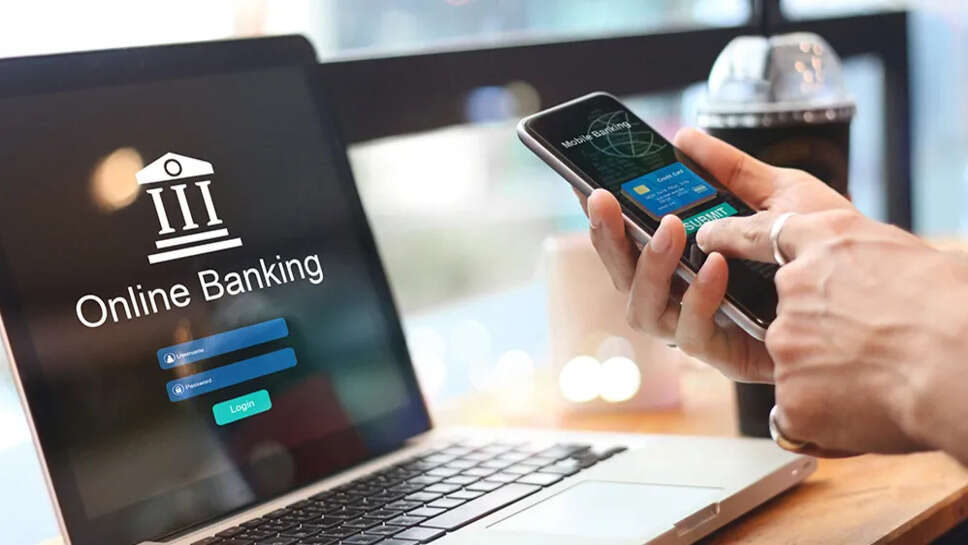Danger in Your Pocket: How Counterfeit Banking Apps Are Wiping Out Savings

In an age where convenience often trumps caution, banking has shifted from physical branches to smartphone screens. But with this digital revolution comes a dangerous new threat: counterfeit banking apps. These fake applications, often indistinguishable from legitimate ones, are becoming a powerful weapon in the hands of cybercriminals, capable of wiping out your entire savings with a single click.
Over the past year, cybercrime agencies and financial institutions have reported a sharp spike in the number of malicious banking apps masquerading as official ones. These apps look real, behave normally, and often mimic the interface and branding of popular banks. But once downloaded, they act as sophisticated malware, stealing sensitive data, siphoning funds, and leaving victims shocked and helpless.
The Anatomy of a Counterfeit App
These fake apps are meticulously designed to deceive users. Cybercriminals use identical logos, fonts, and color schemes to mimic legitimate bank applications. Some are uploaded to unofficial app stores, third-party websites, or even sneak into official app stores by bypassing security filters.
Once installed, the app prompts users to enter sensitive credentials—mobile numbers, PINs, passwords, or even biometric data. It may even operate for a while like a normal banking app to delay suspicion. In the background, however, it is logging keystrokes, capturing screenshots, or redirecting users to malicious servers.
Some advanced variants include the ability to bypass two-factor authentication (2FA), intercept SMS OTPs (one-time passwords), or clone the device’s identity. These apps don’t just steal money—they can hijack your entire digital life.
Real Stories, Real Losses
The human cost of such frauds is heartbreaking. In Mumbai, a 52-year-old retired teacher lost ₹14.8 lakh after downloading what she believed was her bank's official app from a Google search result. The app installed spyware on her phone, captured her credentials, and enabled the criminals to drain her account within minutes.
In another incident, a Bangalore-based startup founder downloaded a fake SBI app while trying to resolve an issue. The app mimicked the bank’s helpdesk interface and requested remote access through a screen-sharing tool. Within 30 minutes, ₹3.2 lakh had vanished from his business account.
These stories are not rare. According to cybersecurity firms, thousands of such apps are in circulation at any given time, with new variants surfacing regularly. Criminal syndicates operating from overseas, particularly in Southeast Asia and Eastern Europe, are believed to be behind many such operations.
How These Apps Spread
Fake banking apps typically reach users through three main channels:
-
Search Engine Ads & Fake Websites: Cybercriminals buy ad space on search engines, ensuring their fake app websites rank at the top of results. Unsuspecting users, in a hurry, click and download without verifying authenticity.
-
Phishing Links: Users receive links via SMS, WhatsApp, or email that appear to be from their bank. The message urges immediate action—such as KYC verification, account suspension alerts, or refund processes—and redirects to fake app downloads.
-
Social Media Campaigns: Ads promoting “faster” or “updated” versions of banking apps often lure users on Facebook, Instagram, or YouTube. Some even use influencer-style marketing to build trust.
Why It’s Hard to Detect
One of the most dangerous aspects of counterfeit apps is their realism. These apps often use reverse-engineered versions of the real app or screenshots lifted from genuine sources. They may even function temporarily like the original app by linking to real bank pages.
Adding to the problem, many users don’t check app permissions, reviews, or developer details before downloading. Even well-educated individuals fall prey due to urgency, technical unfamiliarity, or blind trust in digital platforms.
Moreover, some of these apps come embedded with polymorphic malware—code that changes its signature every time it is run, making it harder for antivirus tools to detect.
Government and Institutional Response
In India, the Reserve Bank of India (RBI) and Indian Computer Emergency Response Team (CERT-In) have issued multiple advisories cautioning users about suspicious banking links and third-party app downloads. Banks have started public awareness campaigns, SMS alerts, and in-app notifications urging customers to download only from verified sources.
Despite these efforts, enforcement remains a challenge due to the global nature of cybercrime. Many scam operations are hosted on international servers or routed through proxy IP addresses, making it difficult to trace perpetrators.
To counter the growing threat, the government is also considering stricter regulations for digital platforms and app stores, mandating tighter app review mechanisms and quicker takedown responses.
How to Stay Safe: Tips You Shouldn’t Ignore
Here are essential steps every smartphone user should follow to avoid falling victim to fake banking apps:
-
Download Only from Official App Stores: Use Google Play Store or Apple App Store. Avoid third-party app markets or APK files shared via links or messages.
-
Verify Developer Credentials: Always check the app developer’s name. Official apps will have the bank’s full name as the verified publisher.
-
Avoid Clicking on Search Ads for Banking Apps: Instead of searching for your bank’s app, go directly to the official website or use links provided by the bank.
-
Enable Multi-Factor Authentication (MFA): Even if your credentials are compromised, MFA adds a second layer of protection.
-
Check Permissions: A banking app asking for access to your contacts, microphone, or camera (without reason) is a red flag.
-
Beware of Urgent Messages: Any SMS or email asking for immediate action or offering attractive refunds/bonuses is likely a scam.
-
Regularly Monitor Transactions: Keep an eye on your account activity. Many frauds can be stopped early if reported immediately.
-
Install a Good Mobile Security App: A reliable antivirus or anti-malware app can detect malicious behavior before it becomes dangerous.
-
Educate Others: Share awareness with elders and children, who are often more vulnerable to such schemes.
-
Report Suspicious Activity: If you encounter a fake app or receive a phishing message, report it to the bank and to cybercrime.gov.in immediately.
Final Thoughts
As banking becomes increasingly digital, so do the methods of fraud. Counterfeit banking apps represent a chilling evolution in cybercrime—one that uses deception, speed, and technology to strip away people’s life savings in seconds.
While governments and banks are stepping up security, the first and most effective line of defense is you. Vigilance, awareness, and digital literacy are no longer optional—they are essential tools in protecting your financial future.
